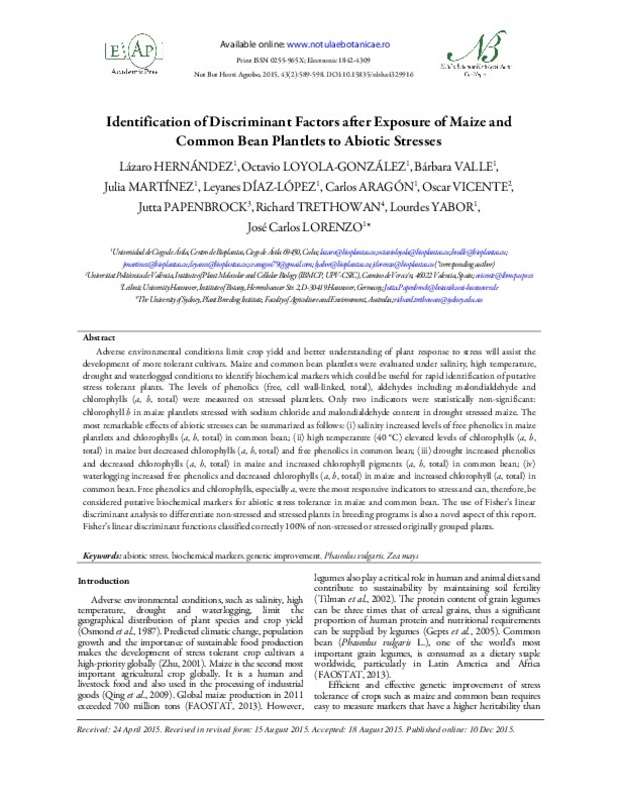JavaScript is disabled for your browser. Some features of this site may not work without it.
Buscar en RiuNet
Listar
Mi cuenta
Estadísticas
Ayuda RiuNet
Admin. UPV
Identification of discriminant factors after exposure of maize and common bean plantlets to abiotic stresses
Mostrar el registro completo del ítem
Hernández, L.; Loyola González, O.; Valle, B.; Martínez, J.; Díaz López, L.; Aragón, C.; Vicente Meana, Ó.... (2015). Identification of discriminant factors after exposure of maize and common bean plantlets to abiotic stresses. NOTULAE BOTANICAE HORTI AGROBOTANICI. 43(2):589-598. doi:10.15835/nbha4329916
Por favor, use este identificador para citar o enlazar este ítem: http://hdl.handle.net/10251/78809
Ficheros en el ítem
Metadatos del ítem
| Título: | Identification of discriminant factors after exposure of maize and common bean plantlets to abiotic stresses | |
| Autor: | Hernández, Lázaro Loyola González, Octavio Valle, Bárbara Martínez, Julia Díaz López, Leyanes Aragón, Carlos Papenbrock, Jutta Trethowan, Richard Yabor, Lourdes Lorenzo, José Carlos | |
| Entidad UPV: |
|
|
| Fecha difusión: |
|
|
| Resumen: |
Adverse environmental conditions limit crop yield and better understanding of plant response to stress will assist the
development of more tolerant cultivars. Maize and common bean plantlets were evaluated under salinity, ...[+]
|
|
| Palabras clave: |
|
|
| Derechos de uso: | Reconocimiento (by) | |
| Fuente: |
|
|
| DOI: |
|
|
| Editorial: |
|
|
| Versión del editor: | http://www.notulaebotanicae.ro/index.php/nbha | |
| Tipo: |
|









